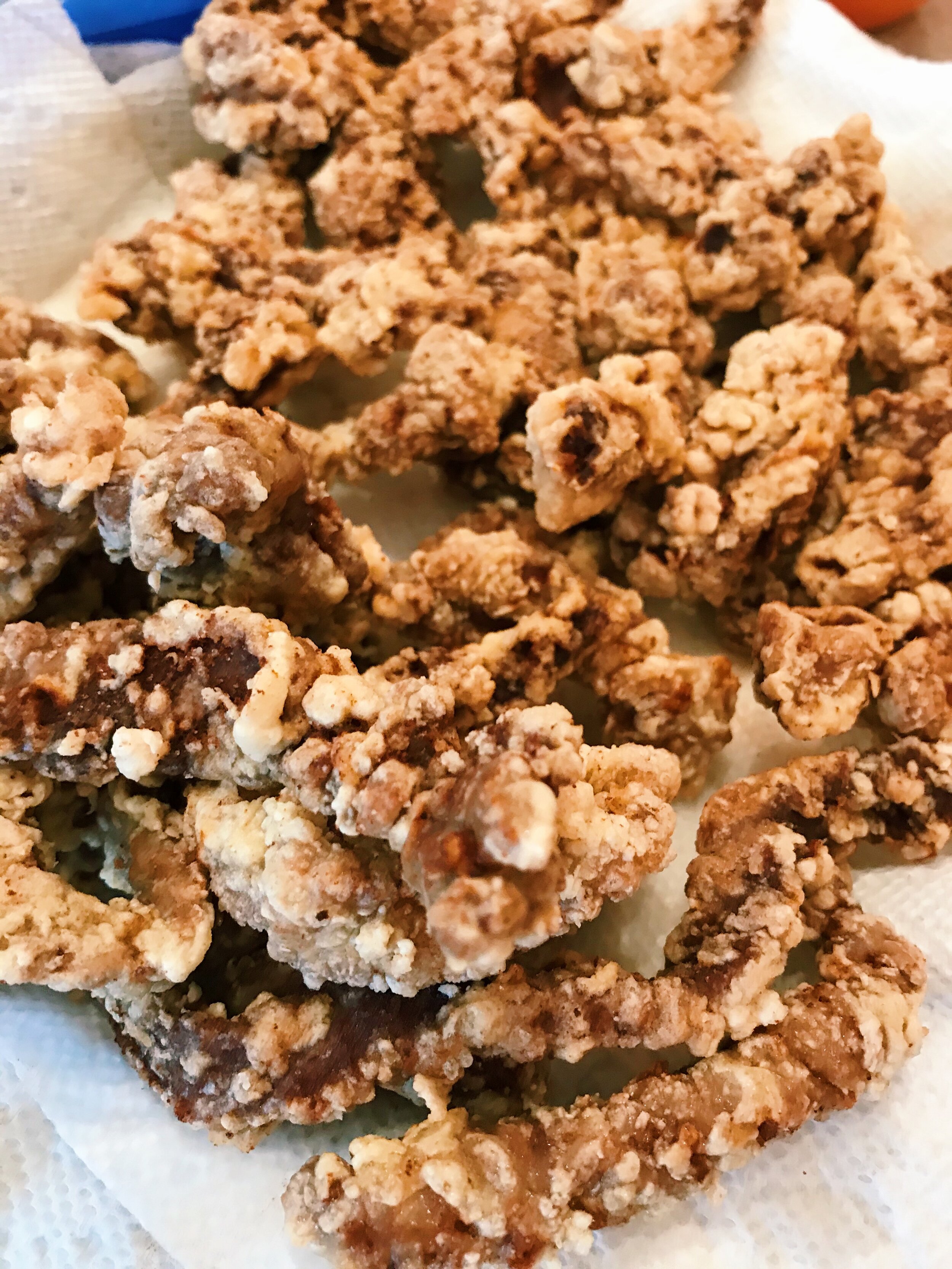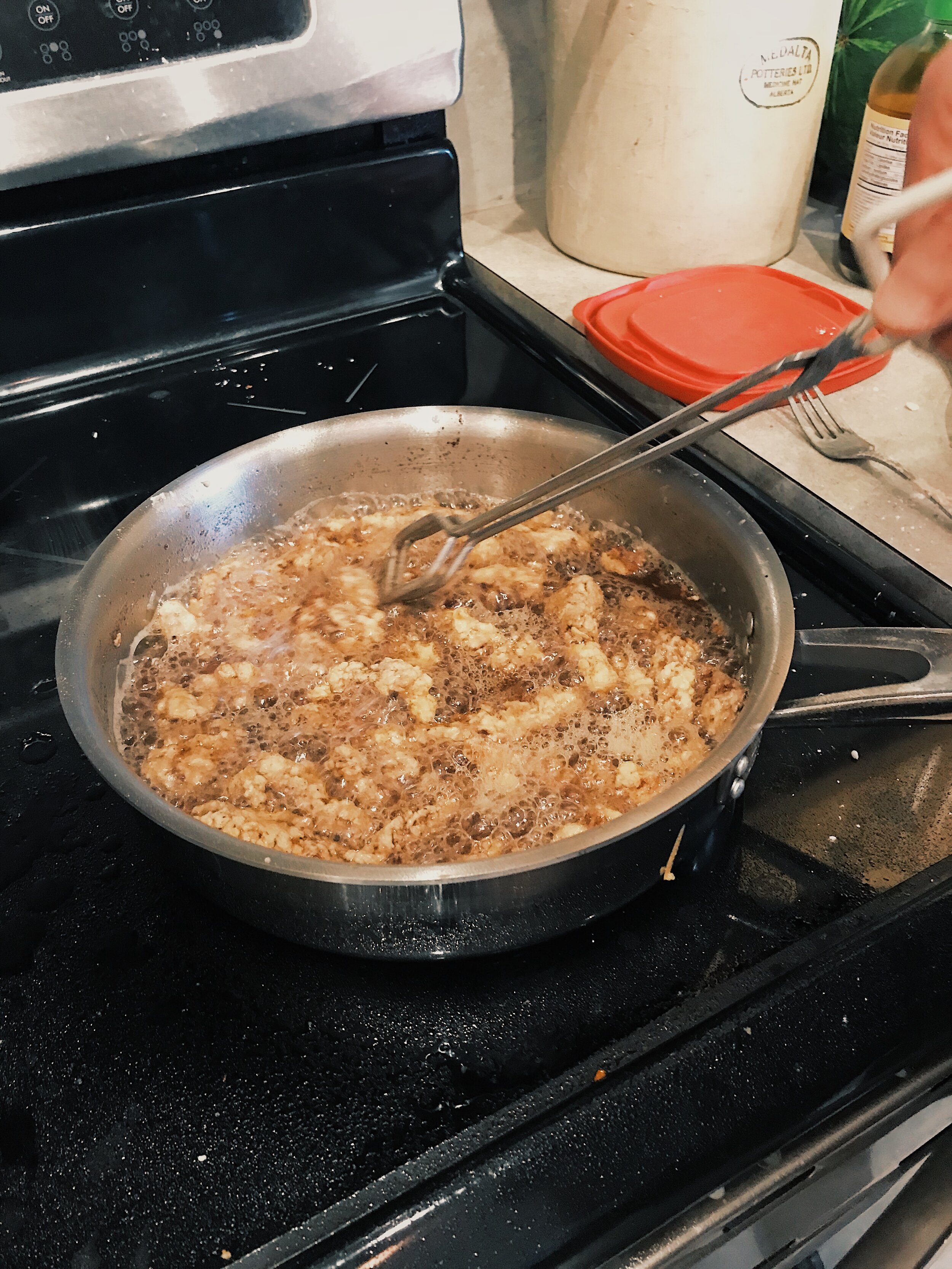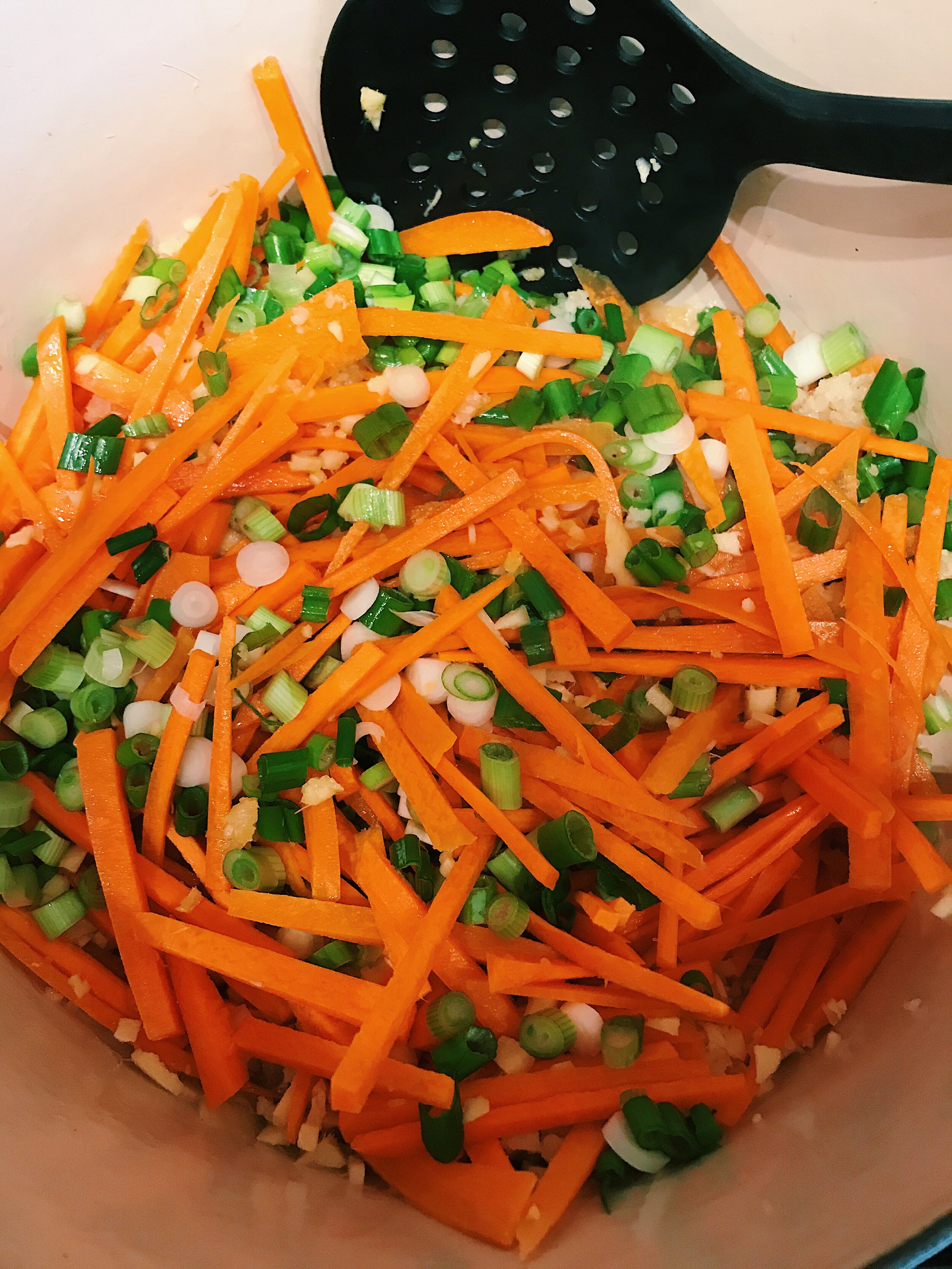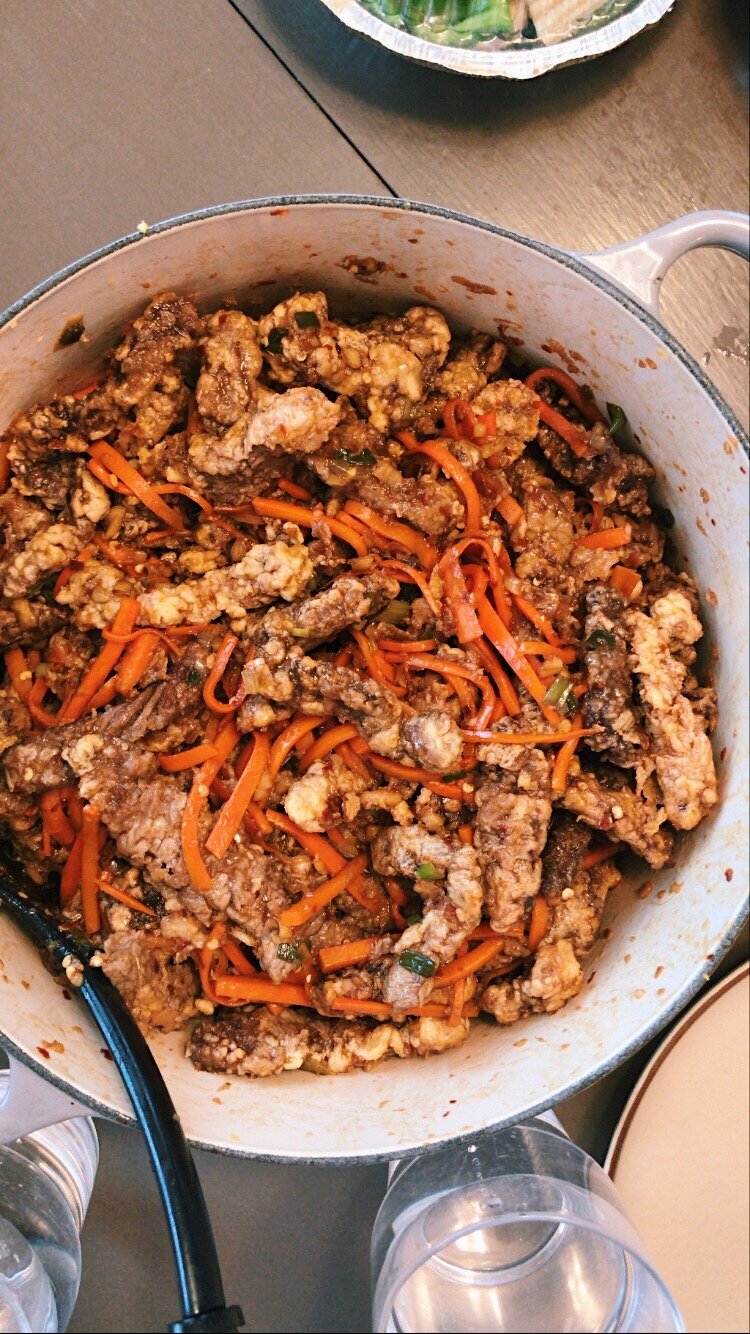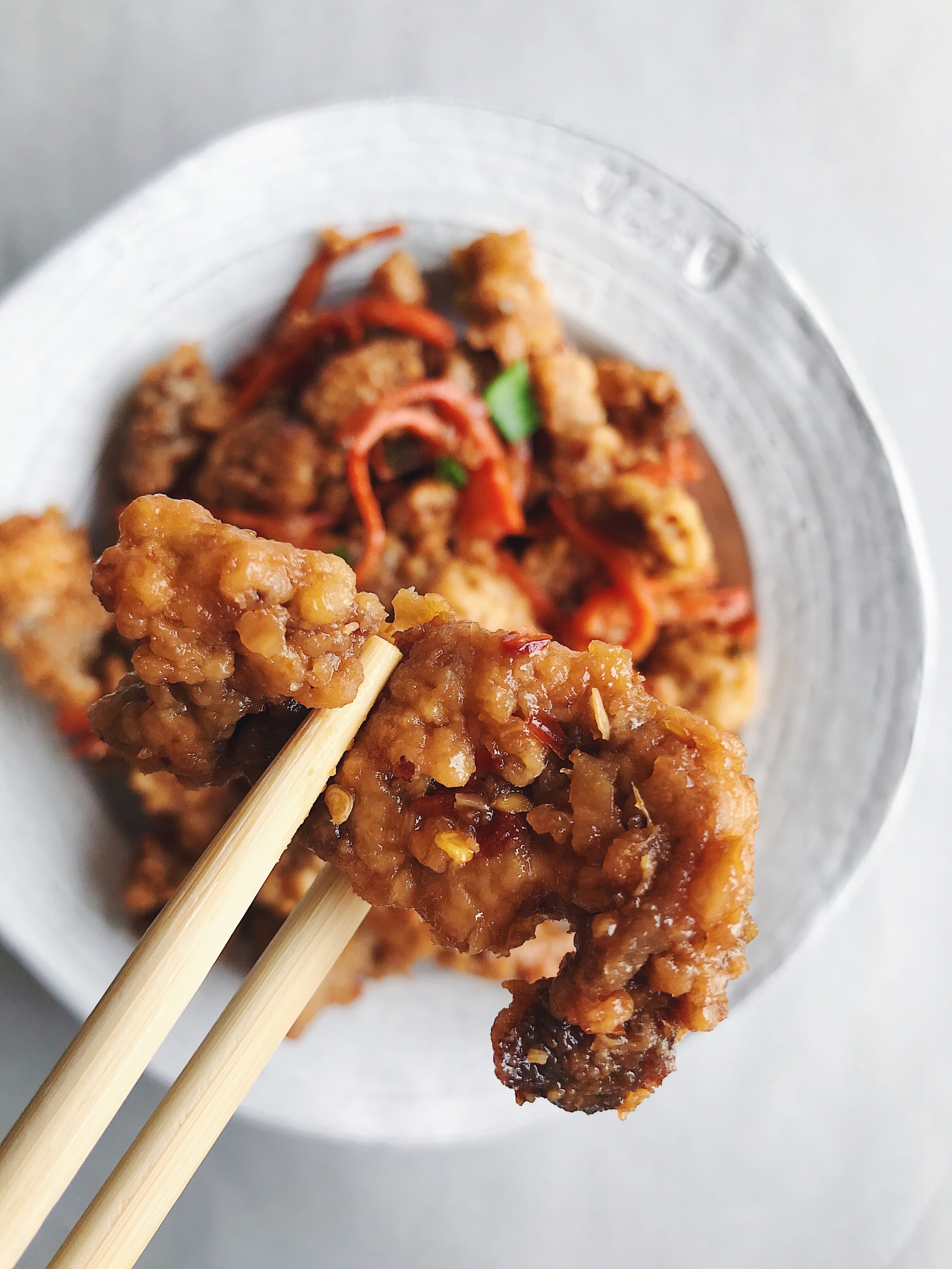Authentic Gluten Free Ginger Beef
Who doesn’t love ginger beef?!
I feel proud to have grown up in the city where ginger beef was invented :) It was always one of my favourite dishes we ordered as a family whenever we had Chinese food. Since I found out I had a non-celiac gluten sensitivity I’ve realized it’s hard to find a restaurant that has gluten free ginger beef. My #1 place to get it is in Lethbridge…so we get it once a year when we visit my in laws at Christmas. I couldn’t wait 7 more months so I thought it would be fun to try to make from home - I hope you have fun too!
What I didn’t realize was how much sugar is in ginger beef! If you want it to taste like the restaurant.. don’t reduce the amount of sugar. With that being said because of the amount of sugar, this dish should be enjoyed in moderation as too much sugar can be hard on our gut.
GET TO KNOW YOUR OILS FOR FRYING BELOW…. or just scroll down for the recipe!
It is important to know your oils for frying…their stability is key! Some oils can withstand higher temperatures than others.
A oil suitable for frying will:
have a high smoke point
be stable, so it doesn’t react with oxygen when heated
Let’s chat about a few types of fats first:
Saturated fats contain no double bonds between their carbon atoms, the chain is “saturated” with hydrogens, which results in a very straight structure with molecules packed together very tightly. For this reason, saturated fats are generally solid at room temperature, which makes them great cooking fats given they are not prone to damage by heat.
Monounsaturated fats, or MUFAs, are a type of unsaturated fat. “Mono,” meaning one, means that monounsaturated fats have only one double bond making them relatively stable.
Polyunsaturated fats contain two or more double bonds in their chemical structure. These double bonds can react with oxygen and form harmful compounds when exposed to high heat. These oils are unstable.
Oils that contain higher levels of saturated fats tend to be more stable when heated. Oils that are mostly saturated and monounsaturated are good for frying. However cooking oils that contain large amounts of polyunsaturated fats are less suitable for frying.
From a chemistry perspective, it is actually the saturated nature of the bonds in saturated fats that makes them ideal sources of fat for cooking given they are very stable at high temperatures. Oils that consist mostly of saturated + monounsaturated fats are best for deep frying because they’re the most stable at high heat. An easy way to remember this is that Saturated fats are Stable - they both start with an S ;)
SO some good oils for frying are:
coconut oil
lard
tallow
ghee
avocado oil
olive oil (contrary to popular belief, some studies have shown that olive oil is suitable for deep frying due to its stable molecular buildup))
GINGER BEEF
INGREDIENTS
1 lb of steak sliced into narrow strips
3/4 c corn starch
2 eggs
1 large carrot- julienne
3 green onions chopped
1/4 c fresh minced ginger
5 garlic cloves
3 tbsp gluten free soy sauce
4 tbsp rice vinegar
1 tbsp sesame oil
1/2 c sugar
1-3 tsp red pepper flakes (depending on spice tolerance)
oil for frying
DIRECTIONS
Place cornstarch in a large bowl
Beat eggs in a separate bowl
Coat beef in cornstarch, dip in eggs, then coat again in the cornstarch
Pour 1 inch of oil into a frying pan or wok, heat until hot
Place coated beef into your pan, flip after minutes and cook until crispy
Remove beef and place on paper towel and set aside
Repeat until all of the beef is cooked
Drain oil except 1 tbsp, add carrots, ginger, onion + garlic. Stir fry briefly.
Add garlic, soy sauce, rice vinegar, sesame oil, sugar + red pepper flakes and bring to a boil.
Add beef to sauce. Toss + serve!
xoxo
erin
DID YOU MAKE THIS RECIPE?
Tag @erinlamb.ca on Instagram

